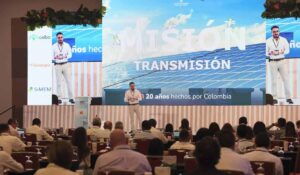Jaime Concha from ANDI provided figures that highlight the boom in hydrogen and energy efficiency projects in Colombia. What did the expert say?
Jaime Concha, Vice President of Mining, Hydrocarbons, Energy, and Territory of ANDI, at the 3rd Hydrogen and Energy Efficiency Congress, provided some figures that show the boom in projects in Colombia seeking to make energy use more efficient.
“In the last two years, there have been more than 8,000 applications and a number of certificates granted: there are 2,027 favorable certificates for efficient energy management projects; 4,800 dedicated to non-conventional renewable sources. And, although I say it’s still slow, the key is that things have already started,” Concha noted.
The expert indicated that there is an approved investment in energy efficiency of $2.4 billion in the last two years; in renewables of $6.8 billion and for hydrogen, $7 billion is already being discussed.
“There are very successful examples; for instance, Argos, which, through these certified audits, has managed to reduce its energy consumption by 15%. And that, in times like the ones we are experiencing of energy scarcity, is an important grain of sand and one of the ways of solution,” Jaime Concha explained.
The ANDI spokesperson pointed out that hydrogen is consolidating as an essential instrument to achieve global decarbonization goals. This in a context where direct electrification will not be possible, especially in heavy industry, aviation, or maritime transport: sectors where hydrogen is seen as an opportunity.
“Today, 96% of the hydrogen produced is from natural gas or coal, but 4% comes from electrolysis powered by renewable sources, and that is the challenge: to increase that participation percentage. We already know that Colombia has immense potential,” the industry leader indicated.
Concha emphasized that the country has a potential of between 1 and 3 gigawatts (GW) of electrolysis capacity by 2030.
In fact, he mentioned specific projects: to date, 36 initiatives have been announced, including: the Coral project in Cartagena with 5 megawatts (MW) of electrolysis for oil refining and one in Antioquia aimed at ammonia production with 2.3 MW of capacity.
“The great challenge of hydrogen will be to create demand, so that the numbers add up. We know that, through export, there are significant opportunities. But we need to talk about fertilizers, transportation, mixing in pipelines. And that will require a number of decisions, regulations, and signals to promote green fertilizers and, in the medium and long term, the implementation of sustainable fuels for the aviation and maritime sectors,” the industry spokesperson stated.
Source: Energy – Valora Analitik








